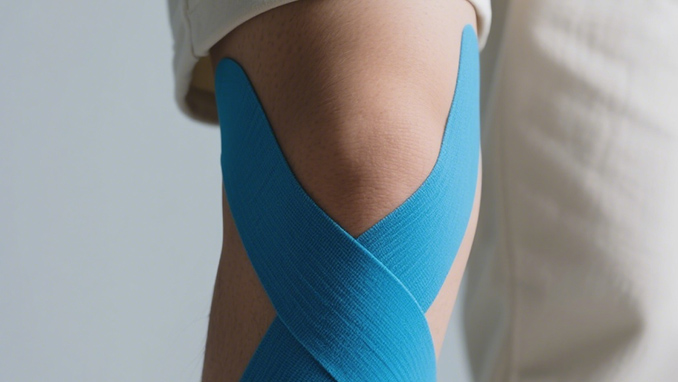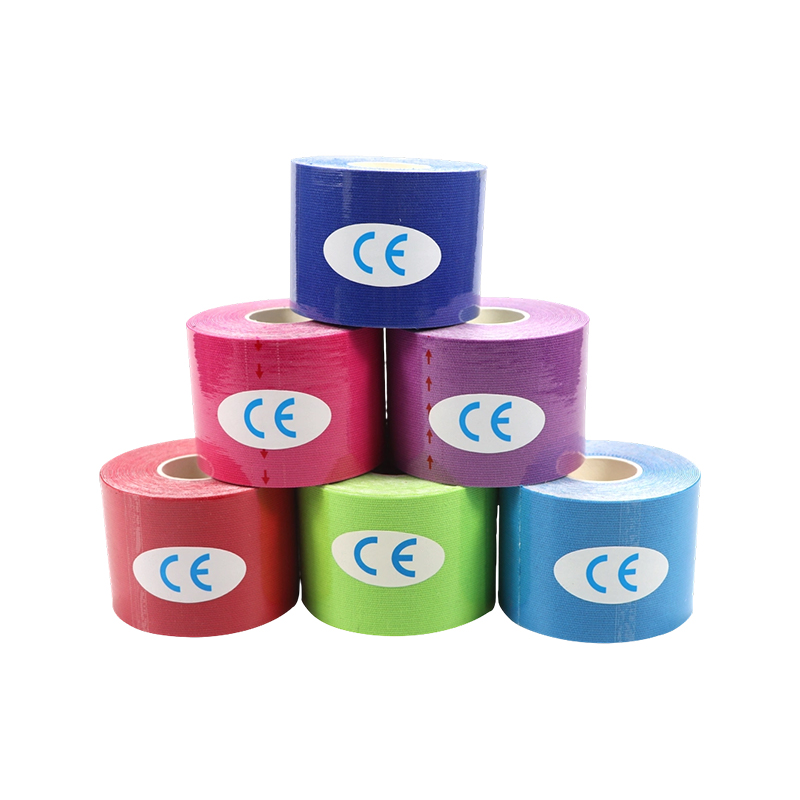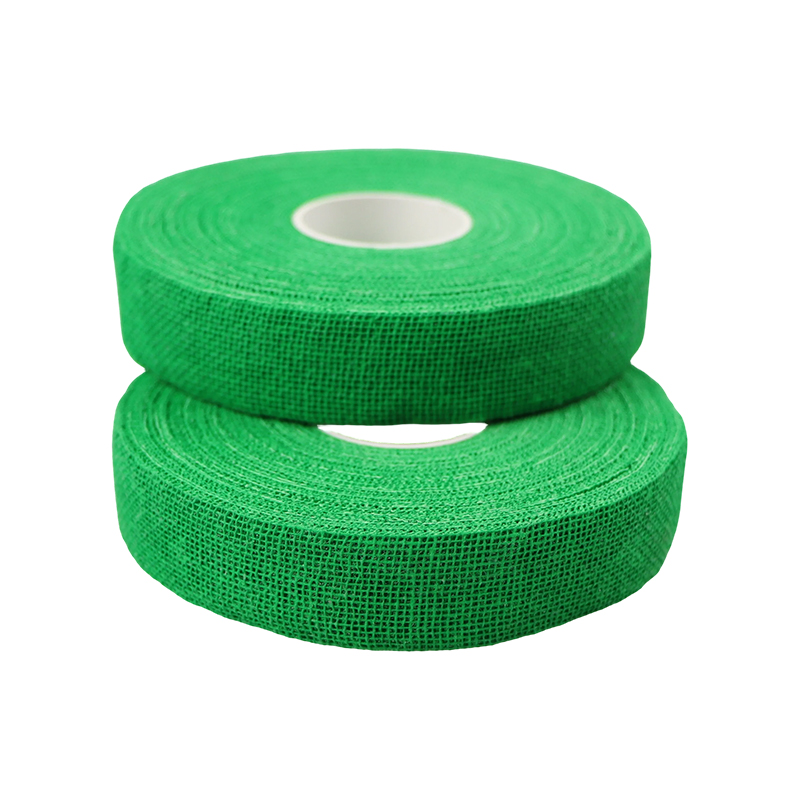

Company

Solutions

Knowledge&Blog

Contact Us
Posted by Qinghong
Innovations in Non-Sterile Polyester PBT Bandages: Enhancing Everyday Wound Care Efficiency
Understanding Non-Sterile Polyester PBT Bandages
Non-sterile polyester PBT bandages represent a significant advancement in the field of medical wound care, offering a blend of durability, flexibility, and cost-effectiveness that makes them ideal for everyday use in non-critical wound management. These bandages are crafted from polyester fibers derived from polybutylene terephthalate (PBT), a material known for its exceptional resilience and ability to maintain structural integrity under various conditions. Unlike sterile bandages, which are mandatory for surgical or acute wound scenarios to prevent infections, non-sterile variants are designed for situations where the risk of contamination is low, such as minor cuts, abrasions, or chronic wound maintenance in controlled environments. The primary distinction lies in their manufacturing process; non-sterile bandages are not subjected to terminal sterilization methods like gamma irradiation or autoclaving, which allows for a more economical production without compromising on performance for their intended applications.
The advantages of using non-sterile polyester PBT bandages are multifaceted, making them a preferred choice in settings where efficiency and practicality are paramount. One of the standout features is their superior breathability, which facilitates optimal air circulation around the wound site, thereby promoting a healthier healing environment by reducing moisture buildup. This is coupled with their high tensile strength, enabling them to withstand repeated movements without tearing, which is particularly beneficial for bandaging joints or areas prone to flexing. Additionally, PBT's inherent resistance to chemicals and abrasion ensures that the bandage remains intact even when exposed to bodily fluids or external irritants. From an economic perspective, the non-sterile nature translates to lower costs, making them accessible for routine use in home care, veterinary practices, or sports medicine. As we delve deeper into the specifics, it becomes evident that these bandages are not just a basic medical supply but a thoughtfully engineered solution for enhancing daily wound care protocols.
Key Features and Material Advantages
The efficacy of non-sterile polyester PBT bandages stems from their unique material properties, which set them apart from traditional options like cotton or gauze. Polyester PBT is a synthetic polymer that exhibits remarkable elasticity and recovery, meaning the bandage can stretch to conform to body contours and then return to its original shape, providing consistent compression and support. This elasticity is crucial for managing swelling in injuries such as sprains, where maintaining even pressure can accelerate recovery. Moreover, PBT fibers are hydrophobic, meaning they repel water, which helps in keeping the wound dry and preventing maceration—a common issue with more absorbent materials that retain moisture. This characteristic is especially valuable in managing exudating wounds, as it allows for fluid to be wicked away from the skin while maintaining a protective barrier.
Durability and Long-Lasting Performance
When compared to other bandage materials, polyester PBT demonstrates superior durability, which directly impacts its longevity and reliability in everyday wound care. For instance, cotton bandages, while soft and absorbent, tend to degrade quickly when exposed to moisture or frequent washing, leading to fraying and loss of integrity. In contrast, PBT bandages retain their strength and form even after multiple uses, making them a cost-effective option over time. This durability is quantified through metrics like tensile strength and abrasion resistance, where PBT consistently outperforms natural fibers. Below is a comparison table highlighting the key differences:
| Material Property | Polyester PBT Bandages | Traditional Cotton Bandages |
|---|---|---|
| Tensile Strength | High; resists stretching and tearing under stress | Moderate; can tear easily when wet or overstretched |
| Moisture Management | Hydrophobic; repels water and dries quickly | Hydrophilic; absorbs moisture, leading to slower drying |
| Durability | Maintains integrity after multiple uses and washes | Prone to degradation with repeated exposure to fluids |
| Cost-Efficiency | Higher initial cost but longer lifespan reduces replacement frequency | Lower initial cost but requires frequent replacement |
Another notable advantage is the material's resistance to pilling and fading, which ensures that the bandage remains functional and presentable throughout its use. This is particularly important in scenarios where bandages are used for extended periods, such as in the management of chronic wounds or orthopedic support. The combination of these features makes non-sterile polyester PBT bandages for home first aid an invaluable addition to any medical kit, providing peace of mind through reliable performance.
Breathability and Comfort
Comfort is a critical factor in wound care, as patients are more likely to adhere to treatment regimens if the bandage does not cause discomfort or skin irritation. Polyester PBT bandages excel in this area due to their woven structure, which allows for excellent air permeability. This breathability helps regulate temperature and humidity at the wound site, reducing the risk of overheating or sweat accumulation that could impede healing. In comparison, occlusive materials like plastic-based bandages can create a greenhouse effect, trapping moisture and potentially leading to bacterial growth. The lightweight nature of PBT further enhances comfort, making it ideal for use on sensitive skin or for pediatric applications where bulkier bandages might be rejected by the patient.
Applications in Daily Wound Management
The versatility of non-sterile polyester PBT bandages allows them to be employed in a wide range of everyday wound care scenarios, from minor household injuries to more specialized uses in sports or chronic condition management. Their adaptability stems from the material's ability to be crafted into various forms, such as rolls, tapes, or tubular bandages, each suited to specific applications. For example, in the context of PBT bandages for minor cuts and scrapes, the bandage can be easily cut to size and applied with minimal effort, providing a secure fit that stays in place during daily activities. This is a significant improvement over traditional gauze, which often requires additional tape or wraps to secure, potentially leading to discomfort or restricted movement.
Use in Sports and Athletic Settings
Athletes frequently encounter injuries like strains, blisters, or abrasions that require prompt and effective bandaging to facilitate continued participation. Non-sterile polyester PBT bandages are particularly well-suited for this environment due to their moisture-wicking properties and elasticity, which allow for unrestricted movement while providing support. For instance, when applied to a sprained ankle, the bandage can offer compression to reduce swelling without compromising the athlete's range of motion—a key consideration in sports medicine. Additionally, the durability of PBT ensures that the bandage remains intact during intense physical activity, whereas other materials might loosen or tear. This reliability makes them a staple in athletic training kits, where quick and efficient wound management is essential for maintaining performance levels.
Managing Chronic Wounds at Home
For individuals dealing with chronic wounds, such as venous ulcers or diabetic foot sores, long-term bandage use is often necessary. Non-sterile polyester PBT bandages provide an economical and practical solution for daily dressing changes, as their reusable nature (when properly cleaned) reduces the overall cost of care. The material's breathability is crucial here, as it helps prevent skin breakdown and maceration, common complications in chronic wound management. Moreover, the bandage's ability to maintain consistent pressure aids in improving circulation, which is vital for healing in conditions like lymphedema. By integrating these bandages into a home care routine, patients can achieve better outcomes without the need for frequent professional interventions, highlighting their role in enhancing self-management strategies.
Selecting the Right Bandage for Your Needs
Choosing the appropriate non-sterile polyester PBT bandage involves considering several factors, including the type of wound, the required level of support, and the expected duration of use. For general first aid, a standard roll bandage might suffice, but for more specific needs, such as elastic polyester PBT bandage for sprains, a variant with higher elasticity would be preferable. It is essential to assess the wound's characteristics—such as exudate level, location, and size—to ensure the bandage provides adequate protection without causing additional issues. For example, highly exudating wounds may benefit from a secondary absorbent dressing underneath the PBT bandage to manage fluid effectively, while dry wounds might only require the bandage for securing a primary layer.
Factors to Consider When Purchasing
When evaluating options, key considerations include:
- Size and Width: Ensure the bandage dimensions match the wound area; wider bandages are better for larger surfaces like limbs, while narrower ones suit fingers or joints.
- Elasticity Level: Determine the needed stretch based on the injury; higher elasticity is crucial for dynamic areas, whereas low-stretch bandages are suitable for static wounds.
- Material Composition: Verify that the bandage is made from high-quality polyester PBT to guarantee durability and performance.
- Ease of Application: Look for features like self-adherence or clip compatibility to simplify the bandaging process, especially for self-application.
- Cost and Availability: Balance quality with affordability, and ensure the bandage is readily accessible for ongoing needs.
By carefully selecting based on these criteria, users can maximize the benefits of breathable non-sterile PBT bandage advantages, such as improved comfort and reduced healing times. Additionally, understanding the bandage's limitations—for instance, avoiding use on infected wounds that require sterile conditions—ensures safe and effective application.
Proper Usage and Maintenance Guidelines
To fully leverage the benefits of non-sterile polyester PBT bandages, it is crucial to follow correct application and care procedures. Improper use can lead to complications like reduced efficacy, skin irritation, or even wound deterioration. Begin by preparing the wound site: clean it thoroughly with mild soap and water, pat it dry, and apply any necessary primary dressings. When wrapping the bandage, start from the distal end and move proximally, ensuring even tension to avoid constriction—which could impair circulation—or looseness—which might cause slippage. For optimal results, overlap each layer by about half the width of the bandage to create a uniform support structure. In the context of how to use non-sterile PBT bandage for wounds, this technique is particularly important for injuries requiring compression, such as edema or sprains, where inconsistent pressure can hinder recovery.
Cleaning and Reusability Tips
One of the standout features of non-sterile polyester PBT bandages is their potential for reuse, which enhances their cost-effectiveness and sustainability. However, this is only safe if proper hygiene practices are followed. After removal, gently hand-wash the bandage in lukewarm water with a mild detergent, avoiding harsh chemicals that could degrade the fibers. Rinse thoroughly to remove all soap residues, and allow it to air-dry completely before storage—avoid wringing or machine-drying, as this can distort the material. It is essential to inspect the bandage before reuse for signs of wear, such as thinning, stains, or loss of elasticity, and discard it if any compromises are detected. This maintenance routine not only prolongs the bandage's lifespan but also ensures that it remains hygienic for subsequent applications, reducing the risk of contamination in non-critical settings.
Innovations and Future Trends
The landscape of wound care is continually evolving, and non-sterile polyester PBT bandages are at the forefront of several innovative developments aimed at enhancing their functionality and user experience. Recent advancements include the integration of smart textiles, where PBT fibers are blended with conductive materials to create bandages that can monitor wound parameters like temperature or pH levels, providing real-time data on healing progress. Another emerging trend is the use of eco-friendly production methods, such as recycling polyester waste into new bandages, which addresses environmental concerns while maintaining performance standards. These innovations not only improve the practical aspects of wound management but also align with broader healthcare goals of sustainability and patient-centered care.
The Role of Technology in Bandage Design
Technological integration is paving the way for bandages that do more than just cover wounds. For example, researchers are exploring the incorporation of antimicrobial agents into PBT fibers through nanotechnology, which could offer added protection against pathogens without the need for sterile processing. Additionally, 3D printing technology allows for the customization of bandage shapes to fit complex anatomical areas, ensuring better coverage and comfort. As these technologies mature, they are expected to make cost-effective non-sterile PBT bandage options even more accessible and effective, potentially expanding their use into new domains like telemedicine, where remote monitoring capabilities become invaluable. By staying informed about these trends, healthcare providers and consumers can anticipate how non-sterile polyester PBT bandages will continue to revolutionize everyday wound care, making it more efficient, affordable, and adaptive to individual needs.
NEWS











 English
English  русский
русский  Français
Français  Español
Español  عربى
عربى 





 ENG
ENG

